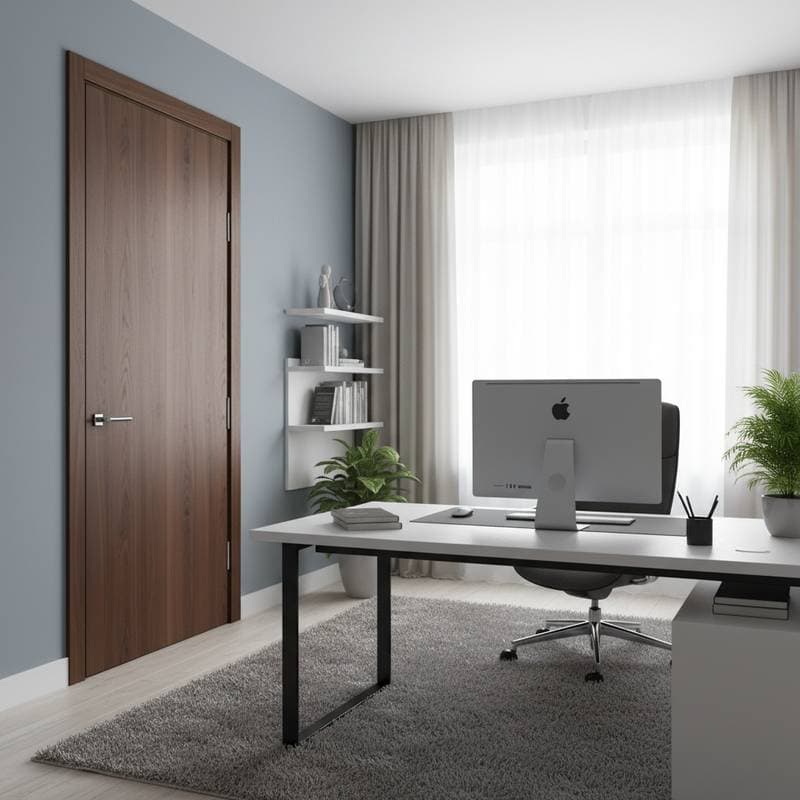Reduce Work-from-Home Noise by 85 Percent Using Soundproof Doors in 2025
Remote work offers flexibility, yet household sounds frequently disrupt concentration. Barking dogs, kitchen clatter, or children at play penetrate standard interior doors with ease. Soundproof doors address this issue by blocking up to 85 percent of noise transmission, creating a professional-grade quiet zone in your home office. Homeowners upgrading to these acoustic solutions gain a reliable path to enhanced focus and output.
Installation Costs for Soundproof Doors
Installation expenses for soundproof doors vary based on material selection, acoustic performance level, and project demands. Expect to invest between $1,200 and $4,000 per door, covering materials and labor. Simpler modifications like applying seals or panels begin at $150 to $400, whereas high-end solid-core or specialized acoustic doors may exceed $5,000 for bespoke wood or metal designs.
| Material or Service | Cost Range | Key Features |
|---|---|---|
| Hollow-core door with acoustic seals | $150 to $400 | Affordable option for moderate office noise reduction |
| Solid-core wood door | $600 to $1,500 | Effective sound blocking with appealing aesthetics |
| Acoustic-rated composite door | $1,200 to $3,000 | Designed specifically for noise isolation and longevity |
| Studio-grade soundproof door | $3,000 to $5,000 | Optimal control for demanding environments like home studios |
| Acoustic panel retrofit | $200 to $800 | Enhances existing doors with added insulation |
These estimates account for materials and expert installation. Opting for a do-it-yourself approach might cut expenses, though improper alignment or sealing could compromise results significantly.
Decoding Sound Transmission Class Ratings
Evaluate soundproof doors using the Sound Transmission Class (STC) rating, which quantifies sound-blocking capability. Typical interior doors score 20 to 25 on the STC scale, allowing conversations to carry clearly. Solid-core doors improve to 30 to 35, while advanced acoustic models hit 45 or above. Every 10-point STC increase approximately halves the perceived volume of sound.
For home offices, target an STC of 35 to 45 to balance expense and effectiveness. Demanding setups, such as professional recording spaces, require ratings of 50 or greater.
Sound Blocking Examples by STC Rating
| STC Rating | Blocked Sound Level | Common Door Type |
|---|---|---|
| 25 | Normal speech passes through clearly | Standard hollow-core interior door |
| 35 | Speech becomes muffled; ambient noise diminishes | Solid-core wood door |
| 45 | Loud voices remain faint | Acoustic composite door |
| 55 or higher | Environment approaches silence | Professional studio door |
Key Factors Affecting Installation Expenses
Multiple elements determine the total cost of a soundproof door project. Grasping these allows for precise budgeting.
-
Core Material and Density
Dense options like solid wood or composites excel at sound absorption yet command higher prices. Lighter hollow-core doors prove economical but offer limited protection. -
Frame Integrity and Sealing
Superior frames, bottom thresholds, and edge gaskets prevent sound leaks. Without them, even premium doors underperform. -
Dimensions and Custom Elements
Larger or irregular openings elevate material and labor needs. Features like glass panels or ornate finishes add to the expense. -
Project Demands
Adapting an existing frame costs less than full jamb replacement. Structures in older homes with irregular surfaces often need extra framing adjustments. -
Regional Labor and Expertise
Contractor rates influence quotes, typically ranging from $75 to $150 hourly based on location.
Licensed contractor James Porter of QuietBuild Interiors notes, "The biggest mistake homeowners make is assuming any heavy door will block sound. True soundproofing depends on the entire assembly, including seals and frame integrity."
Weighing Do-It-Yourself Against Professional Installation
Individuals skilled in basic woodworking may handle solid-core door replacement over a weekend. True acoustic sealing, however, demands specialized knowledge. Errors in hinge alignment, threshold leveling, or gap management can slash effectiveness by 40 percent.
Experts apply sound-specific sealants, fitted gaskets, and reinforced hinges suited to heavier units. They verify frame alignment for optimal STC achievement. Although self-installation trims a few hundred dollars, hiring professionals guarantees durability and manufacturer warranties.
Complementary Strategies for Superior Noise Management
A soundproof door provides substantial improvement, yet noise routes through walls, floors, and ceilings persist. Integrate these measures for comprehensive results.
- Perimeter Sealing: Install gaskets and self-closing door bottoms to eliminate drafts.
- Acoustic Drapery: Use thick curtains to suppress reverberations.
- Absorbent Furnishings: Deploy area rugs and wall treatments to capture echoes.
- Structural Additions: Layer insulation or extra drywall layers to increase mass and isolation.
Such combinations can suppress an additional 10 to 20 percent of noise, varying by home configuration.
Upkeep and Durability of Soundproof Doors
These doors demand little maintenance, though periodic checks preserve their efficacy. Examine seals, thresholds, and hinges quarterly. Address any drafts with acoustic caulk or fresh weatherstripping. Lubricate hinges regularly to ease operation of weightier models.
Quality solid-core and composite doors endure 20 years or longer under routine care. Composites outperform wood in resisting humidity and warping, suiting damp areas like basements.
Selecting an Ideal Soundproof Door for Your Office
Begin door selection by assessing noise intensity and functional requirements. Consider these questions:
- Does noise stem from voices or more intense activities?
- Do you seek total quiet or sufficient reduction?
- Which matters more: visual style or financial constraints?
Light-duty offices benefit from solid-core wood with seals for adequate isolation. Busier households call for acoustic composites that blend performance with elegance.
Steps to Install Your Soundproof Door
Transforming your office starts with precise doorway measurements and noise source identification. Obtain estimates from at least two certified installers to evaluate choices and secure reliable pricing. This approach yields a serene space primed for sustained productivity.






